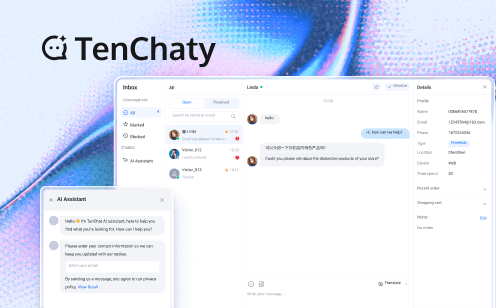Video streaming accounts for over 80% of today's internet traffic, making reliable content delivery crucial for streaming services, online platforms, and businesses worldwide. While users expect seamless playback across various devices and network conditions, delivering consistent, high-quality video streams remains a significant technical challenge. Adaptive Bitrate Streaming (ABR) has emerged as the industry standard solution to this challenge, automatically optimizing video quality based on real-time network and device capabilities. This article explores the core concepts, working principles, and practical applications of ABR technology, helping you understand how it enhances streaming experiences across diverse viewing scenarios.

What is Adaptive Bitrate Streaming?
Adaptive Bitrate Streaming (ABR) represents a sophisticated video delivery technology that dynamically adjusts content quality based on real-time network conditions and device capabilities. Unlike traditional streaming methods that use a single quality level, ABR technology segments video content into small chunks, with each segment encoded at multiple bitrates and resolutions. This approach enables seamless quality transitions during playback, ensuring viewers receive the optimal video quality their current conditions can support.
The technology operates through a continuous feedback loop between the video player and streaming server. The player monitors various metrics including available bandwidth, CPU usage, and buffer status, using this data to request the most appropriate quality level for each segment. When network conditions improve, the player automatically switches to higher-quality segments for enhanced visual clarity. Conversely, during network congestion or device performance limitations, it seamlessly transitions to lower-quality segments to maintain uninterrupted playback.
This intelligent adaptation mechanism offers significant benefits for both viewers and content providers. For viewers, it ensures a smooth, buffer-free viewing experience across different network environments, from high-speed fiber connections to variable mobile networks. For content providers, ABR optimizes bandwidth usage and reduces delivery costs while maintaining viewer satisfaction. The technology has become particularly crucial for streaming services, live events, and video-on-demand platforms, where maintaining consistent playback quality directly impacts user engagement and retention.
How Does Adaptive Bitrate Streaming Work?
Adaptive Bitrate Streaming operates through a sophisticated process that involves both server-side preparation and client-side intelligence. Here's a detailed breakdown of its core components and workflow:
1. Content Preparation
The process begins with video preparation on the server side. The original video content is encoded into multiple versions at different quality levels, typically varying in bitrate and resolution. Each version is then segmented into small chunks, usually 2-10 seconds in length. These segments allow for quick quality switches without interrupting playback. A manifest file (such as .m3u8 for HLS or MPD for DASH) is generated, containing metadata about all available segments, their qualities, and locations.
2. Dynamic Quality Selection
During playback, the client player continuously monitors several key metrics:
- Available network bandwidth
- Device performance capabilities
- Buffer status
- Current playback position
Based on these metrics, the player makes intelligent decisions about which quality level to request for upcoming segments. This decision-making process occurs in real-time, allowing for immediate adaptation to changing conditions.
3. Seamless Adaptation
The system maintains smooth playback through several optimization techniques:
- Pre-buffering multiple segments to handle temporary network fluctuations
- Implementing smart switching algorithms to prevent frequent quality changes
- Gradually transitioning between quality levels to avoid jarring viewer experience
- Maintaining consistent audio while video quality adjusts
This intelligent adaptation ensures viewers receive the best possible quality their current conditions can support while minimizing buffering events and playback interruptions.
Streaming Protocols and Standards
The implementation of Adaptive Bitrate Streaming relies on several key protocols, with HLS and DASH emerging as the dominant standards in modern video delivery. Understanding these protocols is crucial for implementing effective streaming solutions.
1. HTTP Live Streaming (HLS)
Developed by Apple, HLS has become one of the most widely adopted streaming protocols. It works by segmenting video content into small HTTP-based files, typically 2-10 seconds in length. HLS uses M3U8 playlist files in a two-tier structure: a master playlist containing various bitrate options and individual playlists for each quality level. The protocol's widespread support across devices and platforms, particularly in the Apple ecosystem, has contributed to its popularity. HLS also offers built-in security features through AES-128 encryption.
2. Dynamic Adaptive Streaming over HTTP (DASH)
DASH represents an international standard designed to unify adaptive streaming technologies. Similar to HLS in concept, DASH uses MPD (Media Presentation Description) files as manifests to describe segment information. What sets DASH apart is its flexibility in supporting multiple container formats and DRM systems, including PlayReady and Marlin. The protocol's vendor-neutral nature and extensive feature set have led to its adoption by major streaming services and platforms.
3. Protocol Comparison and Selection
When choosing between HLS and DASH, several factors come into play:
- Compatibility: HLS offers broader device support, especially on iOS devices, while DASH provides more flexibility for custom implementations
- Latency: DASH typically achieves lower latency than HLS due to smaller segment sizes and more efficient manifest handling
- DRM Support: DASH offers more comprehensive DRM options, while HLS primarily relies on AES-128 encryption
- Implementation Complexity: HLS provides simpler implementation but less flexibility, while DASH offers more features but requires more complex setup
This standardization of streaming protocols has enabled consistent, high-quality video delivery across different platforms and devices, while providing developers with robust tools for implementing adaptive streaming solutions.
Real-World Applications of Adaptive Bitrate Streaming

Adaptive Bitrate Streaming has become the backbone of modern video delivery, powering diverse applications across multiple industries. Here's how different sectors leverage this technology to enhance their video delivery capabilities:
1. Entertainment and Media
Major streaming platforms like Netflix, Disney+, and YouTube rely on ABR technology to deliver consistent viewing experiences to millions of users worldwide. This technology enables these platforms to serve high-quality content while adapting to varying network conditions, from high-speed fiber connections to mobile networks. Whether streaming the latest blockbuster or binge-watching favorite shows, viewers benefit from optimized playback that automatically adjusts to their connection quality.
2. Live Broadcasting and Events
Live streaming platforms such as Twitch, Facebook Live, and sports broadcasting services depend heavily on ABR streaming to maintain reliable real-time content delivery. During major sporting events, concerts, or live gaming streams, ABR technology ensures viewers stay connected regardless of network congestion or bandwidth fluctuations. This capability is particularly crucial during peak viewing times when millions of concurrent viewers access the same content.
3. Enterprise and Education
Organizations increasingly utilize ABR streaming for internal communications, training, and educational content delivery. Virtual learning platforms, corporate training systems, and video conferencing solutions like Zoom and Microsoft Teams implement ABR technology to ensure smooth communication across global networks. This adaptation is especially valuable for organizations with offices in different regions or remote workers dealing with varying internet qualities.
Key Benefits of Adaptive Bitrate Streaming
1. Superior Viewing Experience
ABR streaming revolutionizes video playback by eliminating the need for manual quality selection while ensuring uninterrupted viewing. The technology continuously monitors playback conditions and seamlessly adjusts video quality, resulting in a buffer-free experience that maintains viewer engagement. This automatic adaptation ensures viewers receive the best possible quality their connection can support without experiencing the frustration of manual adjustments or playback interruptions.
2. Efficient Resource Utilization
Through intelligent bandwidth management and dynamic quality adaptation, ABR streaming optimizes resource usage across the entire delivery chain. The system efficiently allocates bandwidth by delivering only the quality level that can be sustainably supported, while segmented content delivery and smart caching mechanisms significantly reduce server load and storage requirements. This optimization enables content providers to serve massive audiences cost-effectively while maintaining high-quality standards.
3. Universal Compatibility
ABR streaming's versatile architecture supports an extensive range of devices and platforms, from mobile phones to smart TVs and desktop computers. This universal compatibility ensures that viewers receive an optimized experience regardless of their chosen device or platform, with the technology automatically adapting to different screen sizes, processing capabilities, and network conditions. The result is a consistent, high-quality viewing experience across all platforms.
Technical Considerations and Solutions
1. Current Technical Challenges
The implementation of ABR streaming presents several significant technical hurdles that content providers must navigate. The requirement for multiple encodings of the same content increases both processing demands and storage requirements, while initial buffering needs can impact start-up times, particularly in live streaming scenarios. Additionally, the technology must constantly balance the competing demands of quality delivery and device performance limitations, especially on lower-end devices.
2. Emerging Solutions
The industry is actively addressing ABR streaming's current limitations through advanced technologies and optimizations. Next-generation encoding standards like H.265/HEVC and AV1 are dramatically improving compression efficiency, while edge computing deployments are reducing latency and improving delivery reliability. These advancements, combined with sophisticated buffer management algorithms, are steadily enhancing the technology's capabilities and efficiency in real-world applications.
Conclusion: The Future of Video Streaming
Adaptive Bitrate Streaming has revolutionized modern video delivery by solving the fundamental challenges of network variability and device diversity. This technology intelligently adapts video quality in real-time, significantly reducing buffering events while optimizing bandwidth usage. Its widespread adoption across major streaming platforms demonstrates its effectiveness in delivering consistent, high-quality video experiences across diverse viewing scenarios.
While the technology continues to evolve, implementing robust video streaming solutions requires expertise and reliable infrastructure. Tencent Real-Time Communication (TRTC) builds upon these ABR principles to deliver an enterprise-grade streaming solution that addresses modern video delivery challenges. TRTC combines advanced ABR capabilities with ultra-low latency, superior scalability, and comprehensive security features, making it ideal for applications ranging from live streaming to video conferencing.
Ready to implement professional-grade video streaming in your application? Experience TRTC's powerful features with our free trial, including dedicated technical support and comprehensive documentation. Start building better video experiences today - sign up now and get instant access to enterprise-level streaming capabilities.
FAQs
Q1: How is Adaptive Bitrate Streaming different from traditional streaming technologies?
A1: Traditional streaming technologies typically use a fixed bitrate for video transmission and cannot dynamically adjust according to network conditions. In contrast, Adaptive Bitrate Streaming can dynamically adjust video quality based on real-time network conditions, providing a smoother viewing experience.
Q2: What devices is Adaptive Bitrate Streaming suitable for?
A2: Adaptive Bitrate Streaming technology supports a wide range of devices, including smartphones, tablets, smart TVs, desktop computers, and more. Almost any device that can connect to the internet and play videos can utilize this technology.
Q3: Will Adaptive Bitrate Streaming increase data usage?
A3: Adaptive Bitrate Streaming is designed to optimize bandwidth usage and typically selects the most appropriate video quality based on network conditions. Therefore, it will not significantly increase data usage and may even save data by reducing unnecessary video quality.
Q4: Is Adaptive Bitrate Streaming suitable for live content?
A4: Yes, Adaptive Bitrate Streaming is widely used for live content. By dynamically adjusting video quality, it ensures that viewers can watch live streams in real-time under different network conditions, reducing buffering and playback interruptions.


